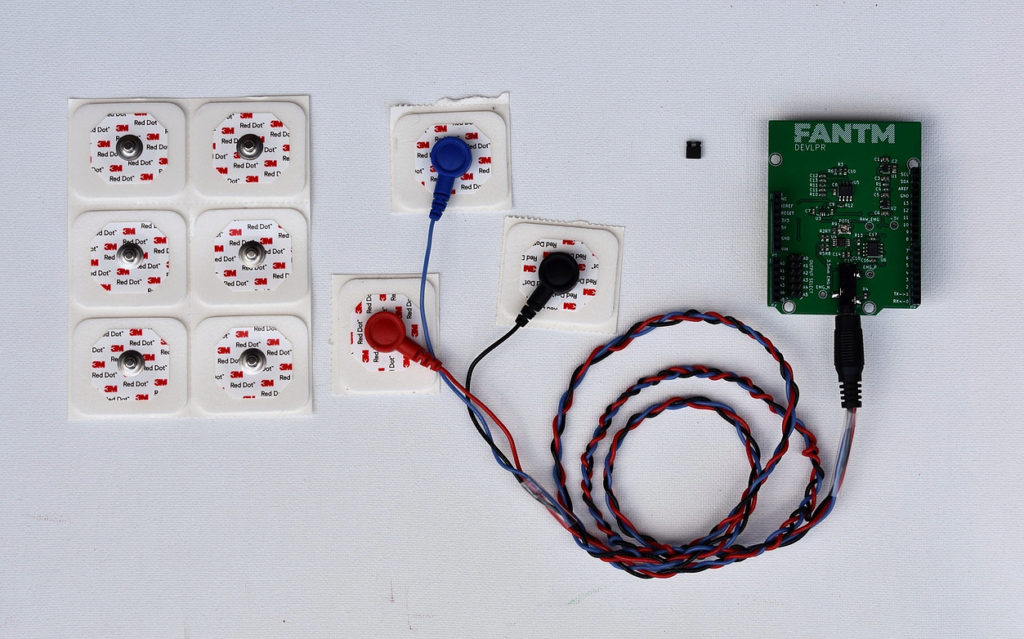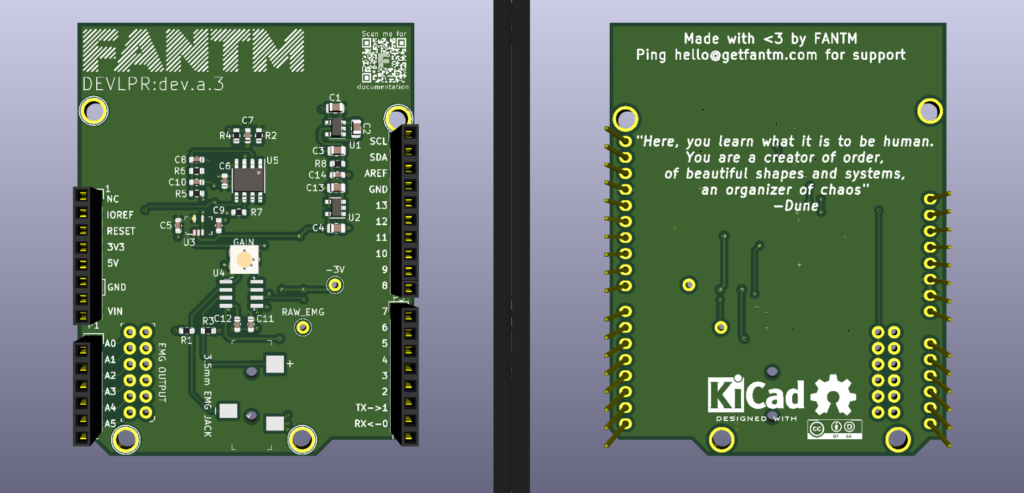14

Brain-to-computer interfaces are nothing new, but they are often difficult to set up or use in more hobby-oriented applications. The team of Ezra Boley and Finn Kuusisto is setting out to change this with their FANTM EMG Arduino Uno shield. It uses a series of conductive pads that pick up electrical signals from a user’s muscles and feeds that data through a set of filters. Once read by the Arduino’s analog input pin, the values are stored within a buffer for later processing.

The FANTM DEVLPR shield was designed to be open source, letting makers tinker with its layout, capabilities, and hardware. There is a 3mm jack where sensors can be attached, along with a potentiometer for adjusting the gain of the signal. Up to six shields can be stacked and fed into their own analog input pins. The code is open source too and in the form of an Arduino library for easily dropping into whatever application it might be needed. Users can pass their own callback functions via the API that get called when certain events occur, such as a muscle flexing or after an amount of time has transpired. The API also provides basic statistical methods to retrieve average, peak, and latest values.

To see more about the FANTM DEVLPR Arduino shield, you can visit its website here.
The post The FANTM DEVLPR is an open source electromyography Arduino shield appeared first on Arduino Blog.


